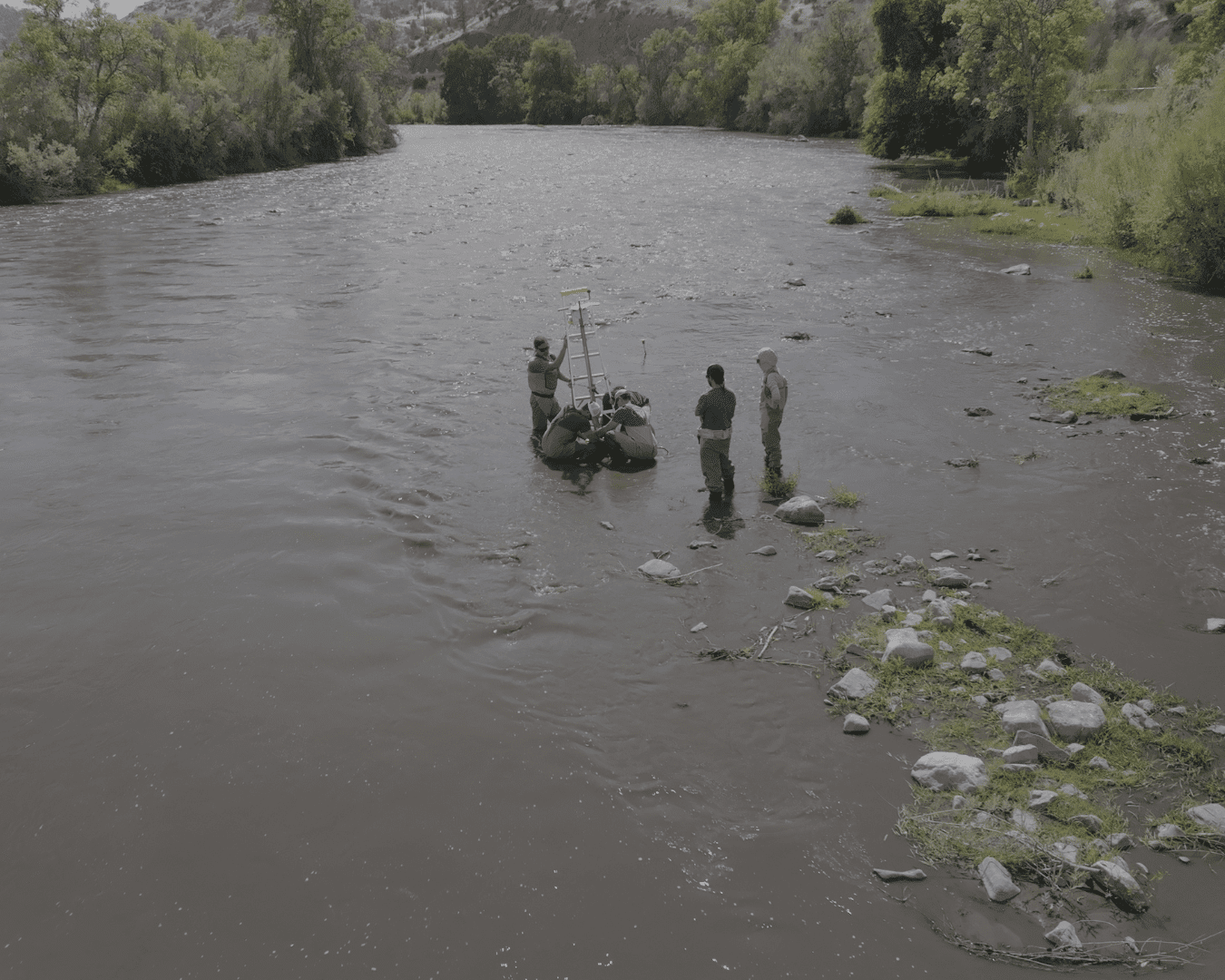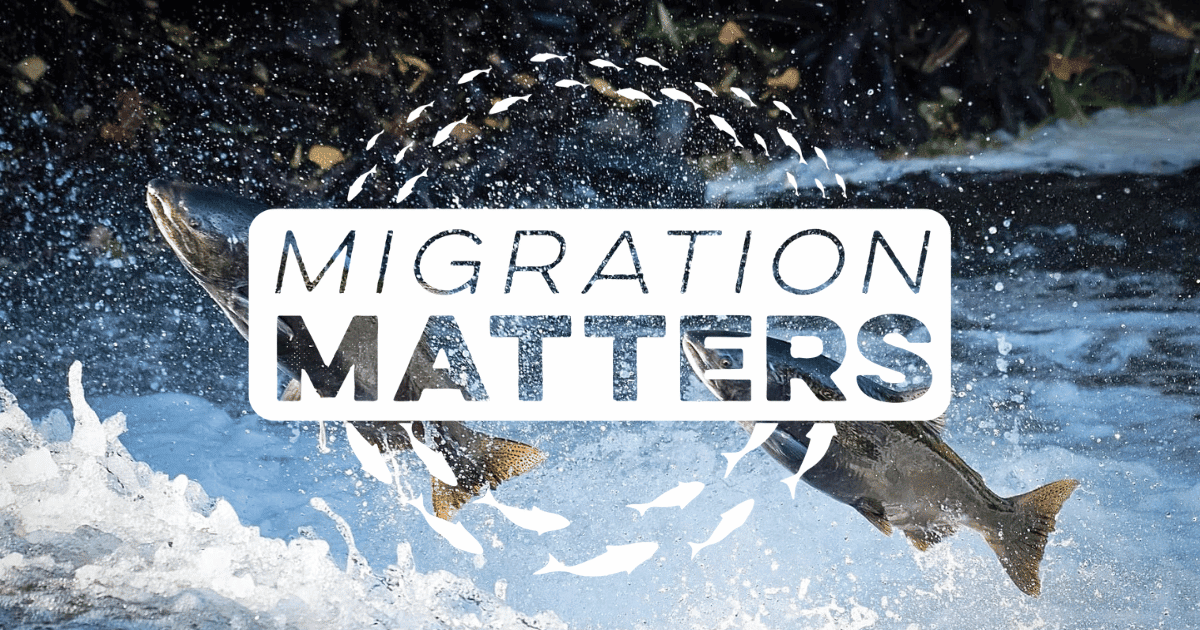Have you ever really thought about the incredible distances that animals travel throughout their lives? Arctic terns fly from pole to pole, caribou cross continents, and salmon swim hundreds to thousands of miles from river to ocean. These are miraculous journeys, but today they are often disrupted by human development and activity. To help these species out, we must understand more about their migration routes and why they move.
Salmon, steelhead, and trout migrate throughout their lives primarily to maximize their chances of successful reproduction and survival. Throughout different stages of their lifecycles, these fish migrate to different parts of a watershed to seek out more abundant food sources, reduce risks from predators, and find suitable locations to lay their eggs.
River to Ocean and Back Again
Salmon and steelhead are anadromous – meaning they are born in freshwater, migrate to the ocean to grow and mature, and then return to freshwater to reproduce. Many fish migrate thousands of miles over their lifetime because each stage of their lifecycle requires a unique environment for them to flourish. When fish spawn, or find a place to lay their eggs, they are looking for a spot high up in the river that will have ample cold water flowing through it to incubate their eggs, and where water will still be flowing as those eggs hatch. Eggs laid in this clean, cold, well-oxygenated water with suitable gravel beds have higher chances of survival. As young fish grow, their initial habitats no longer provide enough food, triggering them to swim downstream towards the ocean. They need food along the way to fuel their journey, and they find this food in floodplains, where water connects with the land and bug production is plentiful. As they approach the ocean, they enter one of the most productive ecosystems around—the estuary. Estuaries, where freshwater rivers meet the ocean, create an environment that is vital to young fish and many other juvenile animals as they prepare for life at sea. An estuary offers fish a buffet to feed on, and the mix of salt and fresh water helps them prepare their bodies to smolt, or to transition from river to ocean. In the ocean, fish can access even more food that helps them grow into adulthood before they return to freshwater to spawn, or lay eggs, and start the cycle again.
During this arduous journey from river headwaters to estuary to ocean and back again, these fish undergo an incredible physical transformation in addition to putting impressive mileage on their bodies. Their journeys also tell us a lot about how our watersheds are functioning. Salmon, steelhead, and trout are some of the best indicators we have for watershed health because they rely on clean, reliable water just like us. If a watershed is not healthy enough to support fish, then there is likely a bigger problem that affects human health too. We have been intertwined for millennia.
While the advent of major highways and other modern transportation infrastructure has made it easier for us humans to get around, much of our development has made it more difficult for animals to continue their traditional migration routes – threatening the livelihoods of various species. A bridge constructed over a river may make it easier for a car to travel between two towns, but, if not built with fish in mind, it may make it difficult or impossible for a fish to pass beneath it. This is true for other animals too as highways divide habitat, making it perilous for animals to cross between the two areas.
Monitoring Migration
To understand where and how animals need our help most urgently, scientists gather data by monitoring movement, behavior, and other patterns. CalTrout and our partners collect data that helps us figure out what restoration efforts to engage in and where they should take place. Simultaneously, we collect data to measure the success of completed restoration projects, ensuring that we learn from what we’ve done, and that future restoration is data-driven and impactful. Much of this scientific monitoring research centers around understanding migration patterns or where the fish are moving and when. Each piece of a watershed must be functioning to support a successful lifecycle for these fish. What watersheds do they rely more heavily on? Where in a watershed are they suffering greater mortality? Do they need higher quality freshwater habitat or is their survival inhibited by poor estuary conditions? Is there a barrier blocking their access to habitat they previously utilized? Are they now able to access habitat that was previously blocked but now opened back up due to a restoration action? Answers to these questions illuminated by monitoring help guide our work.
Across the state, CalTrout and our partners use many different scientific methods to monitor fish throughout their lifecycles and collect this data. In the Bay Area, we use passive integrated transponder (PIT) tags to track fish in Pescadero and Butano creeks. These tags are embedded in fish and detected when fish swim over an installed detection antenna with a weak electric current. In the South Fork Eel River, we use acoustic telemetry tags to track fish movements with sound. These tags send out a ping when they pass by an acoustic receiver, a type of listening device installed throughout the watershed. In the Klamath River, we are using yet another type of tag, radio tags that emit radio waves. These tags are embedded in fish as they begin to migrate above the former dams and can be tracked by mobile equipment from a boat. Determining the appropriate type of monitoring method to use depends on various factors such as fish movement patterns, research questions, watershed size, and more. While each method collects information in different ways, they each work towards the same goal of helping us build a picture of how fish use and move through our watersheds.




There are also less invasive ways to monitor fish. In Southern California and in the Sierra Nevada mountains, we use environmental DNA (eDNA) which involves analyzing small traces of DNA that fish may shed into their environment as they move through it. By sampling water at different times and locations, we can better understand where different species are present, including native and non-native species. Sometimes, monitoring is as simple as walking along a creek and looking for difference evidence of fish, like redds, or nests of eggs. It’s not just scientists that can monitor fish - community members can get involved in this work too! From documenting photos and participating in volunteer creek survey programs, we can build a more complete picture of fish movement patterns together to aid us in recovery of these incredible species.
Migratory animals move throughout their lifecycles because each stage of their lifecycle has unique needs for resources that different parts of a landscape can provide. Arctic terns migrate in search of summer sunlight which enables them to more clearly see and find insects and fish. Caribou travel thousands of miles to escape predators and to find more abundant food. Salmon swim to find food and safe places to continue their next generation. When we prevent these animals from moving freely some of their needs may not be met, impacting their whole lifecycles. To recover these animals, we cannot focus on one single area or one single place or one single lifecycle stage. We must ensure function for every link in the chain – every stage in an animal’s lifecycle and the landscape that supports that stage. Monitoring work helps us better understand which links in the chain are functioning and which are broken so that we can act – bringing us one step closer to a world in which fish, people, and the watersheds we both depend on can thrive.





